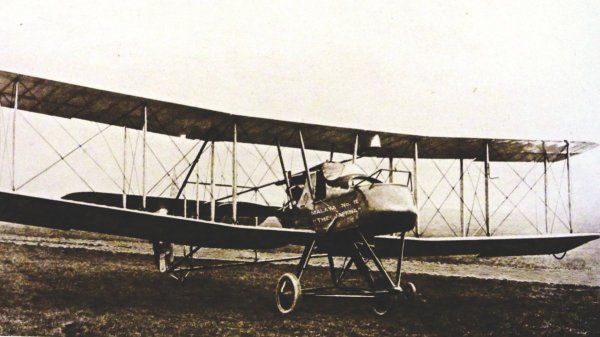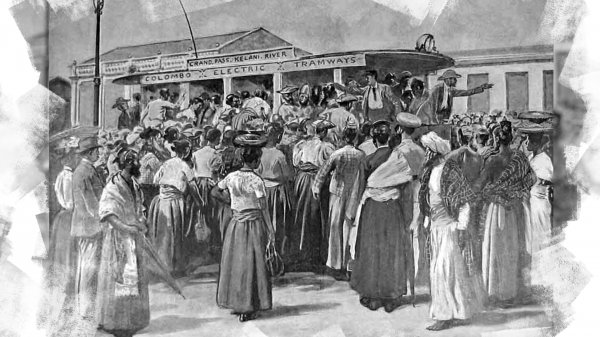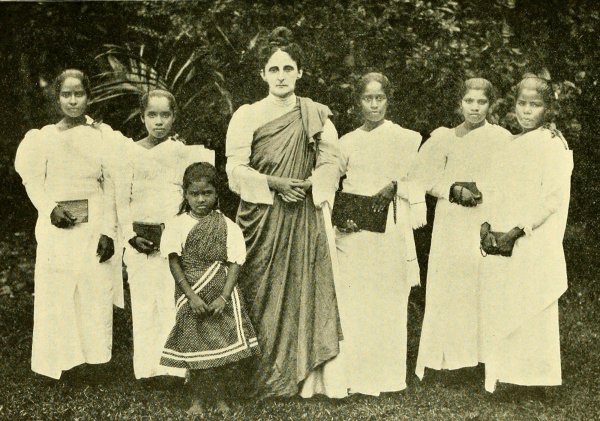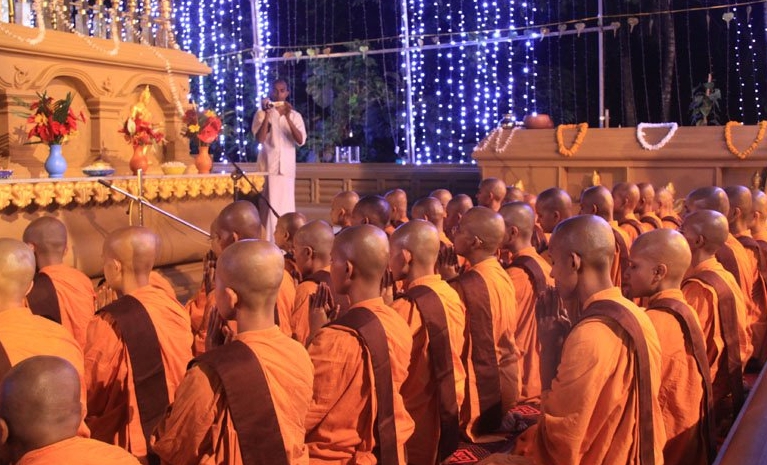
In Sri Lanka, seeing a Buddhist priest clad in orange or saffron robes is no strange sight. Buddhism is, after all, the state religion of our island, and is practiced by a majority of the population. But there is an aspect of Buddhist culture in the country which many may not be familiar with: the order of Buddhist nuns—known in Sinhalese as the Bhikkhuni Sangha or the Meheini Sasana.
The Bhikkhuni Sangha Brought To Sri Lanka
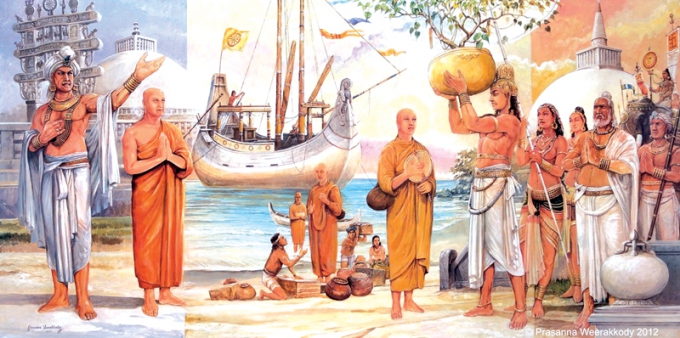
The Order of Buddhist nun was initiated by Sanghamitta theri on her visit to the island in the 3rd century B.C. Image courtesy: dailynews.lk
Speaking to Roar Media, Venerable Dhammananda, a Sil Mathawa (nunhood aspirant) and President of the Lanka Jathika Silmatha Sangamaya, gave us a little about the history of the order.
“The order was initially established in India, during the time of Lord Buddha. The maternal aunt and foster mother of Lord Buddha, Mahapajapati Gotami, was the first woman to request the ordination of women in Buddhism,” said Venerable Dhammananda.
“The Buddha refused this request at first, but later on he acknowledged that women were fully capable of following the philosophy of Buddhism. With the Buddha’s approval, the Bhikkhuni Sangha was established a few years after the Bhikkhu Sangha (Order of Buddhist monks) was founded.”
Under Venerable Mahapajapati, the community of nuns in ancient India flourished, and thousands of women became arhats (novice nuns). However, Venerable Mahapajapati was required to accept eight guru dharmas (special rules) that made the bhikkhunis (fully ordained nuns) subordinate to the bhikkhus (fully ordained monks).
Later on, in the 3rd century BC, the order was established in Sri Lanka, when the Buddhist nun Sanghamitta theri visited the island with her brother Mahinda thera. It was Mahinda thera who had previously brought the teachings of Lord Buddha to King Piyatissa, the King of Anuradhapura.
The Early History of Buddhism in Sri Lanka by Professor Ven. Dhamma Vihari Thera states that the Princess Anula, wife of the younger brother of King Piyatissa, along with 500 other women, requested to join the higher ordination of Buddhism as Buddhist nuns after listening to the preaching of Mahinda thera.
“Complying with the request of Princess Anula, the king took very prompt action to facilitate the establishment of an order of Buddhist nuns (bhikkhunis) in Sri Lanka. On the advice of thera Mahinda, the king sent word to Emperor Asoka and invited theri Sangamitta, that is thera Mahinda’s own sister, to come to Sri Lanka and perform the task of ordaining Anula and her court ladies in perfect conformity with the established Vinaya traditions.”
The Decline Of The Order
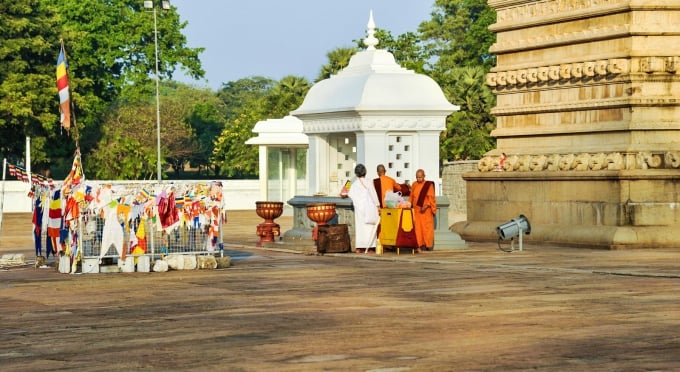
Buddhist nuns, who belong to both the Theravada and Mahayana doctrines are still present in the country, but the exact number of these nuns is unknown. Image courtesy: nkartravelhouse.com
Within a short period of time, the Buddhism earned many followers in Sri Lanka. During that time, the island had a large Buddhist religious community of bhikkhus and bhikkhunis who advocated the Buddhist teachings across the country.
Around the 11th century, however, the Order of Buddhist nuns slowly began to lose its place among Buddhist culture in Sri Lanka. The prime reasons for this were: the fall of the Anuradhapura Kingdom—after the invasion of the Chola empire—and the predominance of Hinduism in the country because of the Hindu Chola rulers. According to Venerable Dhammananda, since the fall of the Anuradhapura kingdom, less women were inclined to join the Buddhist clergy.
Where The Order Stands Today
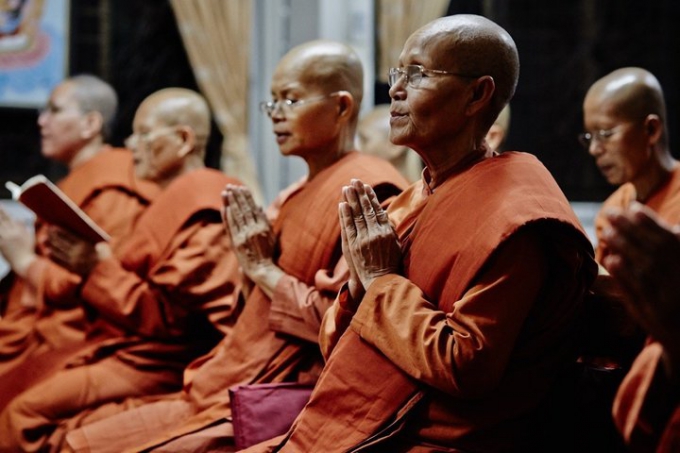
Sri Lanka is not the only country that has female clergy of the Buddhist faith—Buddhist nuns can be found in several other Asian countries like India and Thailand. Image courtesy: huffingtonpost.com
“After the Anuradhapura kingdom fell, there were few Theravada Buddhist nuns left to perform the higher ordination for the novices. Only a senior bhikkhuni can perform the ordination of bhikkhunis. It cannot be performed by a Buddhist monk,” revealed Venerable Dhammananda.
It is the Theravada doctrine which is practised, and has always been practised, by most Buddhists in Sri Lanka. However, according to Venerable Dhammananda, a majority of the nuns in modern day Sri Lanka belong to the Mahayana tradition of Buddhism which was introduced to the island from East Asia.
Because of the differences between these two disciplines of Buddhism, the current Theravada Buddhist monks refuse to acknowledge the Mahayana Buddhist nuns. The government, too, is unwilling to acknowledge these Buddhist nuns, and as a result, no data exists on the exact number of Buddhist nuns in the country today.
For these reasons, Venerable Dhammananda and other several other women like her, have decided to remain as nunhood aspirants of the Theravada doctrine.
Even though movements like the All Ceylon Women’s Buddhist Congress exist in Sri Lanka, it still seems unclear if Sri Lanka’s Buddhist nuns—of both the Theravada and Mahayana doctrines—will be given the recognition they deserve in future.
Hopefully the Venerable Dhammananda, and her contemporaries in the Lanka Jathika Silmatha Sangamaya, will be able to receive higher ordination in the years to come, so that the female Buddhist clergy in the country, will be given their rightful place in the Buddhist community.
Reference: Early History of Buddhism in Sri Lanka by Professor Ven. Dhamma Vihari Thera (2003). Published by the Buddhist Cultural Centre.
Featured Image courtesy: nalanda.org

